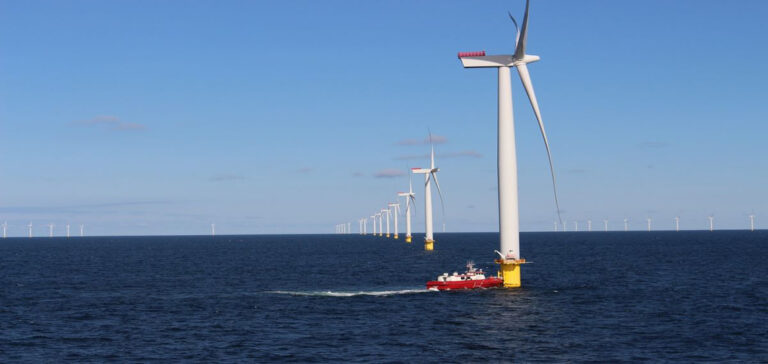Agnès Pannier-Runacher launched a wide-ranging consultation on wind power in France in November, with the aim of assessing possible areas for development. This ambitious approach aims to identify the best locations for wind farms, while preserving fishing practices. The article explores the details of this crucial initiative for France’s energy future.
Concertation pour l’Énergie Éolienne en Mer (Concertation for offshore wind energy)
The French government has embarked on a major initiative to develop offshore wind energy. The six-month consultation, scheduled to start in November, will involve a variety of stakeholders, including fishermen. Added to this are tourists, local authorities andrenewable energy operators. The aim is to create a map of areas suitable for the installation of wind farms. These are found on all four of mainland France’s coastlines: the North Sea, the English Channel, the Atlantic and the Mediterranean.
Implications for Wind Energy in France
The initiative aims to save administrative time by grouping the players in a single public debate, overseen by the Commission Nationale du Débat Public (NPDC). This approach will make it possible to launch a call for tenders for the installation of offshore wind farms, up to a total of 10 gigawatts, by the end of 2024. President Emmanuel Macron had initially unveiled this consultation when he announced his ecological planning. He stressed the need to pool efforts to speed up the process.
France’s lag in marine wind energy
France currently has one gigawatt of installed offshore wind power capacity, according to data from the French Ministry of Ecological Transition. However, the country has fallen behind in recent years in the development of offshore wind projects. To meet its targets, the government has committed to 18 gigawatts of wind-generated electricity by 2035 and 40 gigawatts by 2050. The aim is to eventually have around fifty offshore wind farms in France.
As a result, consultation on offshore wind energy in France is a crucial step in the development of renewable energies in the country. By bringing the players together and identifying areas suitable for the installation of wind farms, the government hopes to make up for lost time and make a significant contribution to the energy transition. Finally, this approach demonstrates France’s commitment to a cleaner, more sustainable energy future.






















